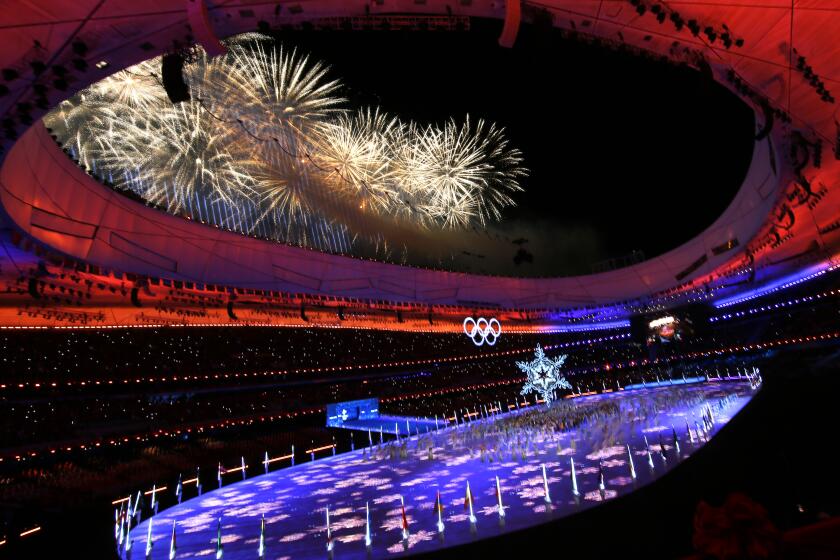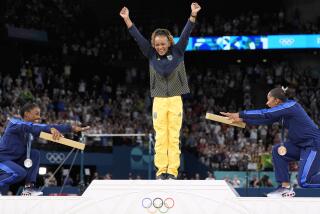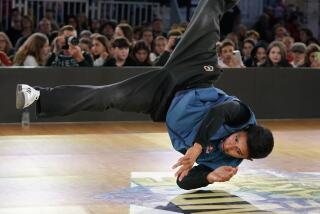Thrilling freestyle skiing big air event makes big debut at Beijing Olympics
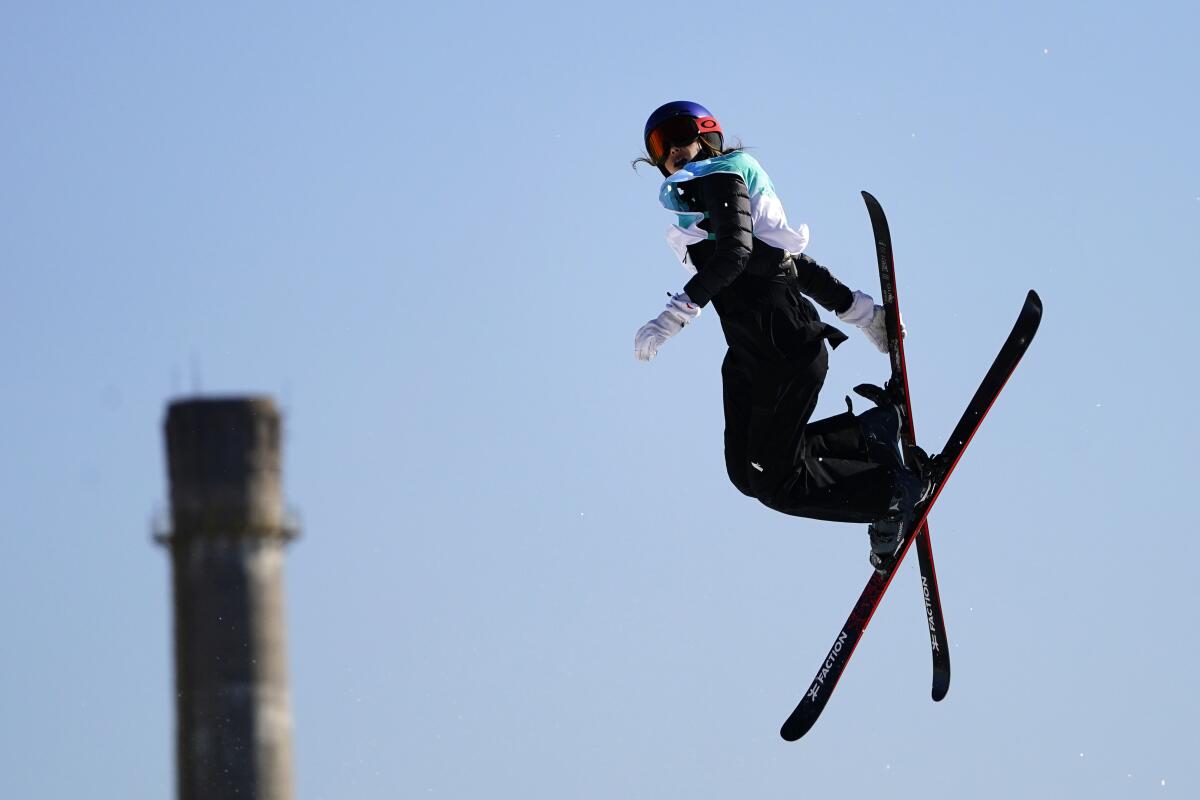
BEIJING — A 524-foot-long ramp covered in snow surrounded by rusting industrial equipment ushered in a new age of freestyle skiing Tuesday.
Chinese star Eileen Gu’s golden coronation in front of adoring home fans was an ideal start to the Olympic era for the freestyle skiing big air competition as a big crowd at Big Air Shougang watched the 18-year-old win her first of potentially three gold medals this month.
Adding big air for freestyle skiing to the 2022 Olympics was the first glimpse at the sport’s future, but athletes are left trying to find the line between positive progression and overexposure that can dilute the sport’s true ethos.
“Watching the last X Games, it’s pretty evident that big air is just getting crazier and crazier,” said American Mac Forehand, who qualified eighth for Wednesday’s men’s final. “I hope with this Olympics, we can just showcase our sport in a different way and hopefully keep it as core as we possibly can, if that’s the correct term. … We want to keep it fun and keep it fun for everybody doing it and open up the doors for kids that want to come up and do this sport as well.”
The International Olympic Committee announced that freestyle skiing big air would join this year’s Olympic program in 2018, a few months after the success of snowboarding big air’s debut at the Pyeongchang Games.
The popular event in which riders barrel down a ramp and launch themselves over a 50-foot gap was included in the inaugural Winter X Games in 1997. It joined the FIS Freestyle Ski World Cup circuit in 2016, when the single big air event contributed toward each rider’s season-long slopestyle point standings, and now has its own champion crowned each season by combining points from each World Cup event.
Donovan Carrillo, who is the best ice skater in Mexican history and trains at a shopping mall rink, is headed to Beijing. It’s taken lots of perseverance.
The relatively short history of freeski big air made officials reluctant to add it to the Olympics in 2018 when snowboarding debuted.
But TV ratings for the Olympics in the U.S. are plummeting. From Pyeongchang’s opening ceremony in 2018 to this year’s in Beijing, viewership dropped by 43%. The 16 million viewers for Beijing’s opening ceremony were NBC’s lowest since the network started broadcasting the Olympics in 1988. Tokyo’s Summer Games didn’t fare much better. While NBC’s prime-time coverage of the Olympics was the second-most watched show of the 2020-21 TV season — only behind “Sunday Night Football — the 15.5 million nightly average was a 42% decline from the Rio Games.
The IOC turned to action sports such as skateboarding or surfing to boost its Summer Olympic hopes. Snowboarding, with halfpipe stars such as Shaun White and Chloe Kim, has consistently been a marquee Winter Olympics event.
Big air is the type of event organizers hope could draw new crowds to the Games. Runs are short, sweet and a little scary. It’s the perfect made-for-TV combination.
American Darian Stevens, who placed 11th in Tuesday’s final, said the emphasis on a single trick instead of a whole slopestyle run could make it easier for fans to understand and get hooked on the sport. All eight U.S. freeskiers expressed excitement over the new discipline’s potential to bring more attention to their sport.
But the pared-down format also has forced riders to upgrade their hardest skills at all costs while potentially sacrificing self-expression, a unique element to freestyle skiing.
With big air, there are more flips and more spins, but perhaps there is less artistry.
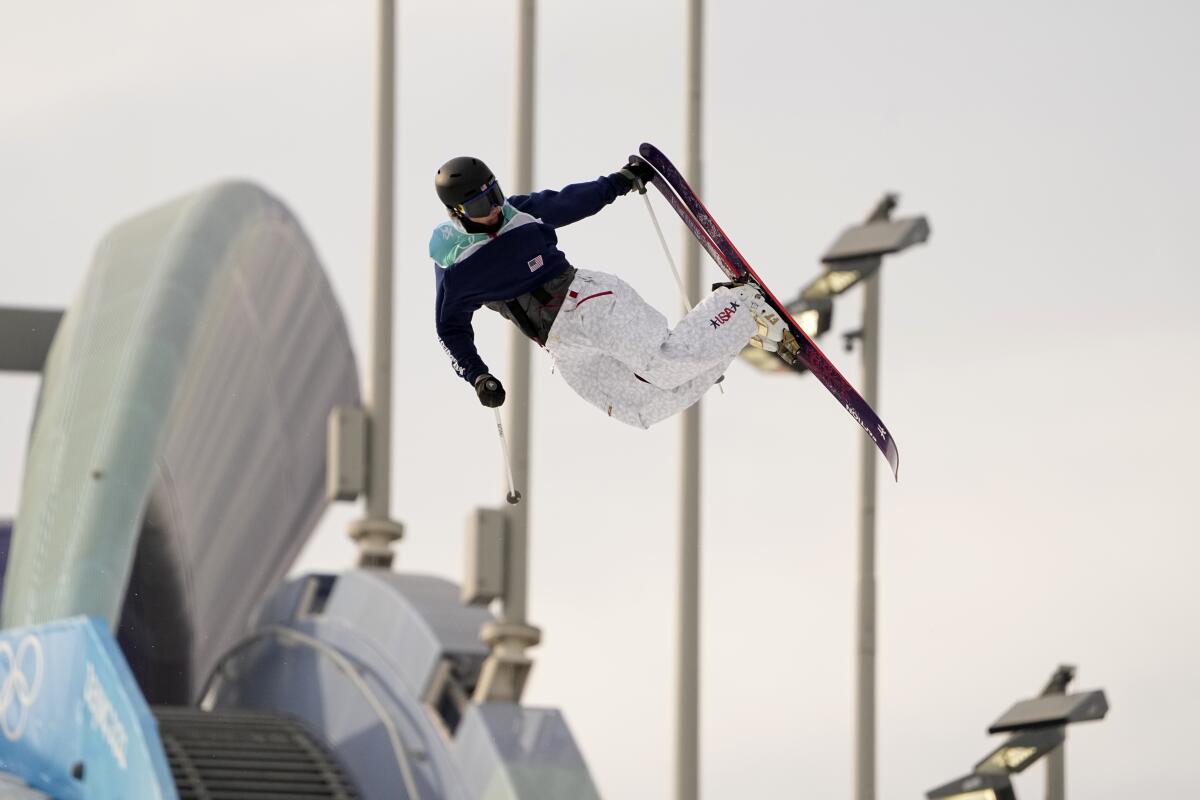
The way in which the IOC attempted to maintain the sport’s identity while pushing limits is by requiring Olympic big air athletes to first qualify in slopestyle. The discipline that incorporates both rail tricks and jumps is still the top event in Alex Hall’s heart.
“You have to be super on point for slopestyle,” said Hall, the 2022 X Games big air gold medalist who won with a contest-first 2160 aerial. “I think people who do really well at the slope events, that really is a true showing of how you are as an overall skier.”
Progression is inevitable and celebrated in the sport, said Maggie Voisin, who has made every U.S. Olympic team since 2014. But the added spotlight of the Olympics has pushed the sport forward at faster rates.
In 2017, Swiss star Mathilde Gremaud earned a perfect score on a switch double cork 1080 — two flips and three twists while approaching the ramp backward — and won the X Games. At X Games 2021, a 1260 from Canada’s Megan Oldham was only good enough to secure silver as Gremaud recorded a switch double cork 1440. Two weeks ago at X Games 2022, France’s Tess Ledeux became the first woman to land a double cork 1620. On Tuesday, Gu joined the 20-year-old French woman and threw down her own 1620 to win the gold medal. The crowd of predominantly Chinese fans erupted in cheers, waving Chinese flags and signs that read “Go Gu Ailing.”
Recapping the news, results and highlights from The Times’ team of reporters who covered the 2022 Beijing Olympic Games.
Beijing’s unique city venue set the perfect stage for Gu’s breakthrough performance. While snow events are usually set high in the mountains, requiring fans to invest time and energy into hours-long commutes, fans had relatively short treks from the city center to watch the 18-year-old prevail. Nearly every available seat in the limited-capacity stadium was full, and fans frantically waved flags every time an athlete landed a run.
Bringing big air to the heart of a big city like Beijing makes the sport more accessible to potential fans, the U.S. skiers said. But similar events, like when Fenway Park in Boston built a big air ramp in 2016, often call for temporary scaffolding structures that can feel unstable to athletes.
There were no such problems with Beijing’s Shougang venue. The ramp designed to look like an elegant ribbon floating through the air is the world’s first permanent big air ramp. After the Games, it will be the training ground for the Chinese national teams and host national and international events.
Beijing is showing big air is here to stay.
More to Read
Go beyond the scoreboard
Get the latest on L.A.'s teams in the daily Sports Report newsletter.
You may occasionally receive promotional content from the Los Angeles Times.


